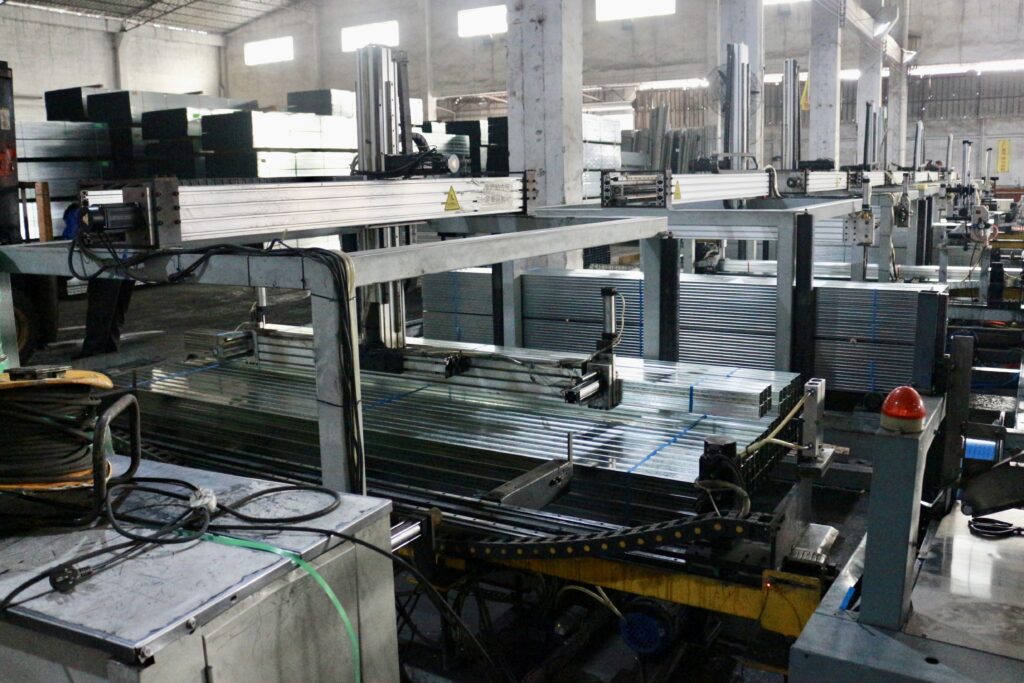
How was the evolution of light steel profiles shaped?
Lightweight steel profiles originated in the United States during the 1930s. At this point, architects determined that conventional timber profiles were deficient in building structures. Therefore, the lightweight steel profile was suggested, comprising slender steel bones, which were not only lightweight but sufficiently robust to serve as the structural profile of a structure. Eventually, lightweight steel profiles became the preferred profile material for temporary and commercial construction.
Subsequently, light steel profiles evolved for domestic use. In the 1950s, American architect Philip Weber introduced the prototype of assembled buildings, leading to global acceptance of light steel profile ceilings within these structures.
Advances in science and technology continuously refine light steel profile manufacturing processes. Contemporary light steel profiles use cutting-edge technology for enhanced strength and endurance. At present, the range of light steel profiles is expanding, including U-profiles, C-profiles, T-profiles, etc., catering to various construction requirements.
Light steel profiles now form an integral part of contemporary architecture, prevalent in a variety of construction sectors, including commercial, industrial, residential, etc. Because of its lightweight, durability, and effortless installation, it projects substantial application potential in the field of construction.
What is the impact of zinc coating on the light steel ceiling?
The zinc layer is critical to the function of the light steel ceiling, with its elevation affecting ceiling performance and effect. Generally, a high zinc layer improves corrosion resistance, durability, and rust prevention in use. This prevents the deterioration of steel material and prolongs the service life. In addition, a high zinc layer enhances the aesthetics of the ceiling, creating a smooth surface and consistent gloss. In addition, it amplifies the thermal conductivity of the light steel ceiling, facilitating heat transfer, reducing indoor temperature, and promoting energy efficiency. Therefore, the zinc layer level should be carefully considered when selecting light steel ceilings.
What are the considerations when installing a light steel profile ceiling?
Ensure that suitable profiles are selected for the installation of light steel profile ceilings. Commonly used are 38, 50, and 75 series profiles, selected according to specific needs. The profile material must comply with industry standards and regulations for product quality and safety.
During profile installation, maintain proper spacing and positioning for optimal stability and firmness. Typical profile spacing ranges from 400 mm to 600 mm, but this value is dictated by ceiling height and area considerations. Similarly, the profile position should be predicated on the shape and size of the ceiling to ensure uniform distribution, which guarantees the flatness and aesthetic appeal of the ceiling.
When installing the profile, pay attention to the connection method – typically, using self-tapping or expansion screws. Secure the profile with firm and stable screw connections to prevent profile loosening or detachment. At the same time, adjust the screw length and diameter to prevent excessive or insufficient safety.
During installation, ensure that a profile is fireproof and moisture-reducing. Fireproof paint or board inside the ceiling is essential to prevent fire damage to the profile. Simultaneously, profile moisture protection is essential to protect against moisture-induced pile deformation or damage.
Throughout the installation of the profile, observe the rust prevention treatment of the profile. Apply rust-proof paint or other material to the profile surface to prevent corrosion/rust. At the same time, ensure the cleaning and maintenance of the profile, regularly inspect the connection and fixing of the profile, and promptly identify and rectify problems, preserving the service life and safety of the profile.
What are the features of WITAPROFILE’s product?
WITAPROFILE’s profile exhibits excellent fire resistance, meeting a variety of fire protection standards. Secondly, it has impressive durability, enhancing service life and reducing subsequent maintenance costs. In addition, WITAPROFILE’s profile ensures meticulous quality control, providing consumers with reliable quality assurance. Finally, its excellent machinability facilitates various installations and constructions.
WITAPROFILE has refined its light steel ceiling products, enhancing the rationality of the bayonet mounting position for rapid installation and simplicity. At the same time, WITAPROFILE’s products exhibit a high zinc layer, cost-effectiveness, rapid installation, and premium service. WITAPROFILE will continue to manufacture top-tier and cost-effective light steel profiles to facilitate superior domestic construction.

